Worksheet Solutions: What Is Cooking - 2 | EVS for Class 3 PDF Download
Q1: Multiple Choice Questions (MCQs).
(i) What are some of the utensils we use every day for cooking?
(a) Tawa
(b) Pressure cooker
(c) Kadahi
(d) All of the above
Ans: (d)
We use a variety of utensils for cooking on a daily basis, including tawa, pressure cooker, kadahi, and more.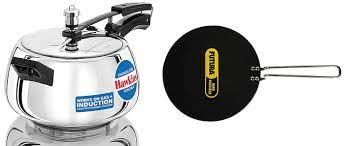
(ii) What are the two kinds of food we eat?
(a) Boiled and Fried
(b) Cooked and Uncooked
(c) Hot and Cold
(d) Raw and Cooked
Ans: (b)
We consume two types of food: cooked and uncooked. Cooked food includes food that is fried, boiled, roasted, etc., while uncooked food is eaten in its raw form.
(iii) What material are some cooking utensils made up of?
(a) Plastic
(b) Wood
(c) Stainless steel
(d) Paper
Ans: (c)
Some cooking utensils are made from stainless steel. Other materials used include brass, copper, and aluminum.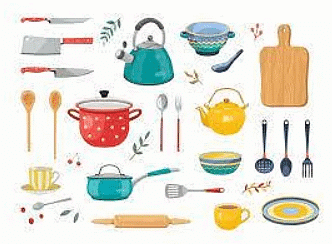
(iv) What is the primary topic of the text "What is Cooking"?
(a) Different types of fuels
(b) Methods of cooking
(c) Cooking utensils
(d) Quick recipes
Ans: (b)
The text primarily discusses different methods of cooking.
(v) What are some examples of cooking utensils mentioned in the text?
(a) Cars, bicycles, motorcycles
(b) LPG, PNG, electricity
(c) Tawa, pressure cooker, kadahi
(d) Vegetables, chicken, rice
Ans: (c)
The text mentions utensils like tawa, pressure cooker, and kadahi.
Q2: Fill in the Blanks.
(i) For the mentioned recipe, moong seeds are soaked in _______ overnight.
Ans: water
For the mentioned recipe, moong seeds are soaked in water overnight.
(ii) To make the moistened moong more delicious, cut onions, tomatoes, salt, and lemon juice are mixed in with the _______.
Ans: moong
To enhance the flavor of moistened moong, various ingredients, including onions, tomatoes, salt, and lemon juice, are mixed in with the moong.
(iii) Cooking is done in every ________________, regardless of the financial status of the people.
Ans: House
The text mentions that cooking is done in every house.
(iv) Cooking utensils are made up of different materials, including stainless steel, brass, copper, and ________________.
Ans: Aluminum
The text lists various materials from which cooking utensils are made.
(v) Some common methods of cooking mentioned in the text are boiling, frying, baking, steaming, and ________________.
Ans: Roasting
The text lists these methods as common ways of cooking.
Q3: True or False.
(i) Cutting is a method of cooking.
Ans: False - Cutting is not a method of cooking; it is a preparation technique.
(ii) We use air as a fuel for cooking.
Ans: False - We do not use air as a fuel for cooking. Common cooking fuels include LPG, PNG, electricity, coal, wood, and dung cakes.
(iii) Some cooking utensils are made from materials like plastic and paper.
Ans: False - Cooking utensils are typically made from materials such as stainless steel, brass, copper, aluminum, and occasionally wood, but not plastic or paper.
(iv) Cooking is a universal activity that is done by all people, whether they are rich or poor.
Ans: True - Cooking is indeed a universal activity, and people of all economic backgrounds engage in it.
(v) Cooking is done in every house, regardless of the financial status of the people.
Ans: True - The text mentions that cooking is done in every house, by both rich and poor.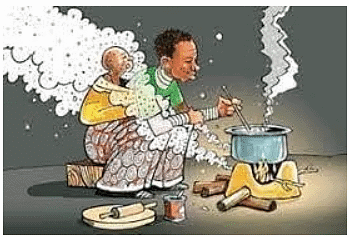
Q4: Answer the following Questions.
(i) What are utensils made of?Ans: Utensils are made of steel, copper, aluminum, iron, glass, etc.
(ii) Tawa is used for?
Ans: Tawa is used for cooking chapatis.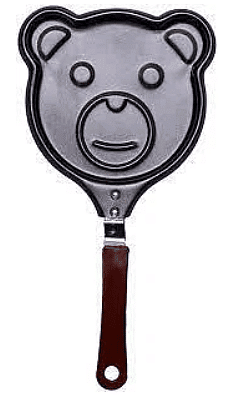
(iii) Ask some elderly people what kind of utensils were used earlier. What were they made of?
Ans: Earlier, the utensils used to be bigger. Copper, soil (earth), brass, and other materials were used in the past.
(iv) Kadahi is used in?
Ans: Kadahi is used in frying, boiling, and cooking vegetables.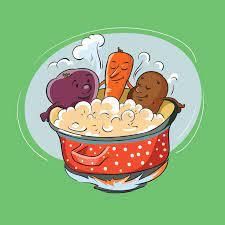
(v) Soak whole moong seeds overnight in water. In the morning, wrap the soaked moong in a wet cloth and cover it. Take it out after a day. Do you find any difference?
Ans: Yes, the moong seeds get sprouted.
(vi) What additional dishes can you make without having to cook? Make a list of their names and the technique of preparation. One example is given below
Ans:
- Buttermilk– Take half a glass of curd – pour a glass of water into it – sprinkle salt and masala onto it – mix everything well – Butter Milk is ready.
- Salad– Chop onions, tomatoes, carrots, radishes, and coriander leaves – sprinkle salt and chat masala onto it – mix everything well – Salad is ready.
|
45 videos|182 docs|48 tests
|
FAQs on Worksheet Solutions: What Is Cooking - 2 - EVS for Class 3
| 1. What are some popular cooking techniques? |  |
| 2. How long does it take to cook a typical meal? |  |
| 3. What are some essential cooking tools and equipment? |  |
| 4. How can I improve my cooking skills? |  |
| 5. How can I make my meals more flavorful? |  |





















